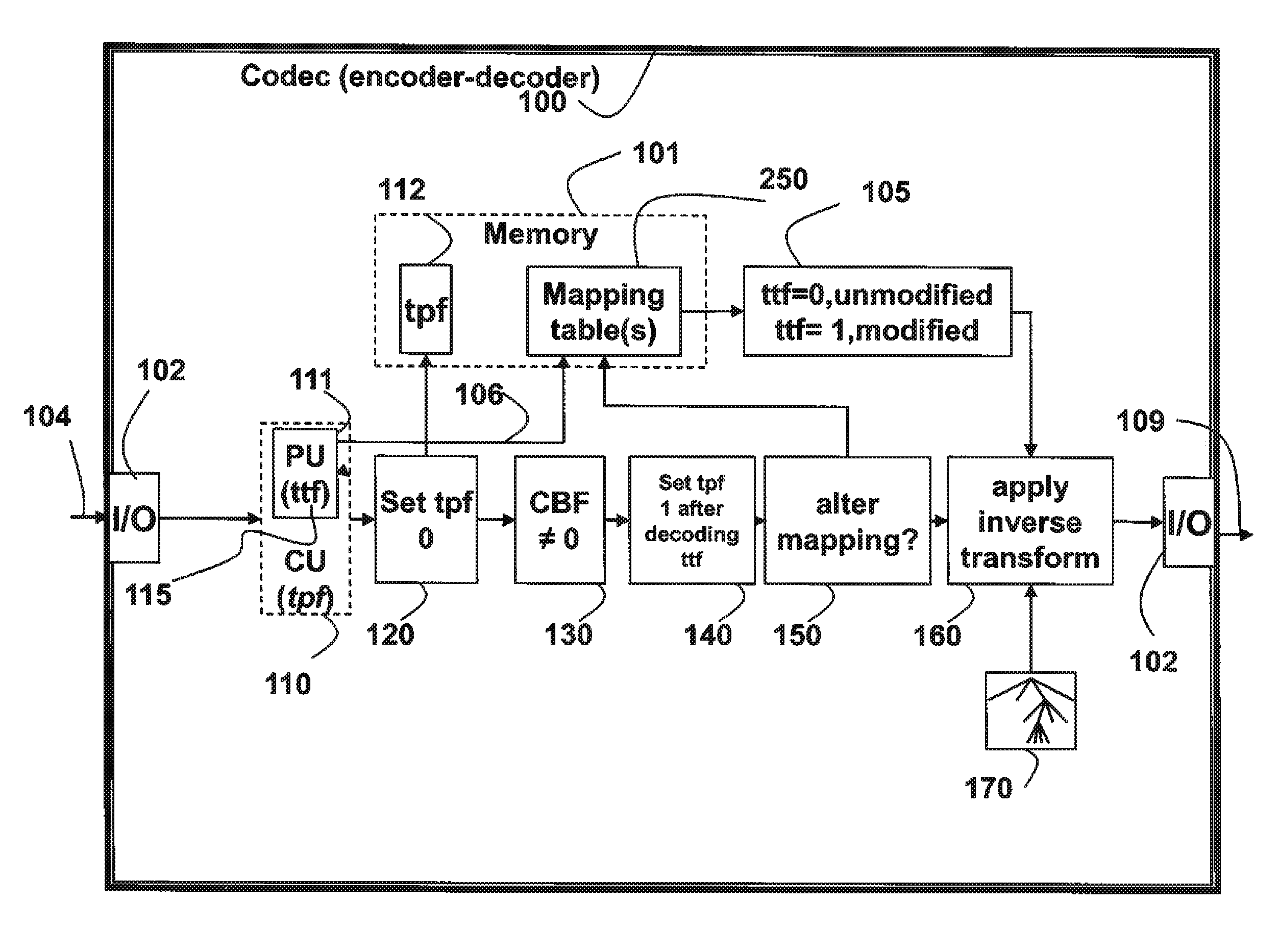Method for Selecting Transform Types From Mapping Table for Prediction Modes
a mapping table and transform type technology, applied in the field of coding pictures, can solve problems such as image or video blocks, and their residuals, not necessarily matching models
- Summary
- Abstract
- Description
- Claims
- Application Information
AI Technical Summary
Benefits of technology
Problems solved by technology
Method used
Image
Examples
embodiment 1
[0028]In this embodiment, the steps above are applied, and if the ttf for a TU is one (1), then a DCT in the mapping table becomes a DST, and a DST becomes a DCT. In other words, if the original mapping table specifies that a DCT is used as the horizontal transform for a given prediction mode, then a DST is used if the ttf is one (1). Similarly, a DCT is used instead of a DST. If the transform-toggle is zero (0) set, then the original mapping is used.
embodiment 2
[0029]This embodiment is similar to Embodiment 1, except mapping is altered only for Intra prediction directions for which both the horizontal and vertical transforms are different. Thus, if the table specifies that the DCT is used for both transforms, then the mapping is not altered. If the table specifies that a first set of horizontal DCT and vertical DST is used, then the mapping is altered so that a second set of horizontal DST and vertical DCT is used. The end effect is that the transforms in first set are swapped 260 to effectively result in the second set, as shown in FIG. 2B.
embodiment 3
[0030]This embodiment is similar to Embodiment 1, except that the mapping of the first set is altered to the second set only for Intra prediction directions for which both the horizontal and vertical transforms are identical. This maps a 2-D ACT to a 2-D DST, and a 2-D DST to a 2-D DCT, without altering any 2-D transform where the horizontal and vertical transform types are different.
PUM
 Login to View More
Login to View More Abstract
Description
Claims
Application Information
 Login to View More
Login to View More - R&D
- Intellectual Property
- Life Sciences
- Materials
- Tech Scout
- Unparalleled Data Quality
- Higher Quality Content
- 60% Fewer Hallucinations
Browse by: Latest US Patents, China's latest patents, Technical Efficacy Thesaurus, Application Domain, Technology Topic, Popular Technical Reports.
© 2025 PatSnap. All rights reserved.Legal|Privacy policy|Modern Slavery Act Transparency Statement|Sitemap|About US| Contact US: help@patsnap.com



